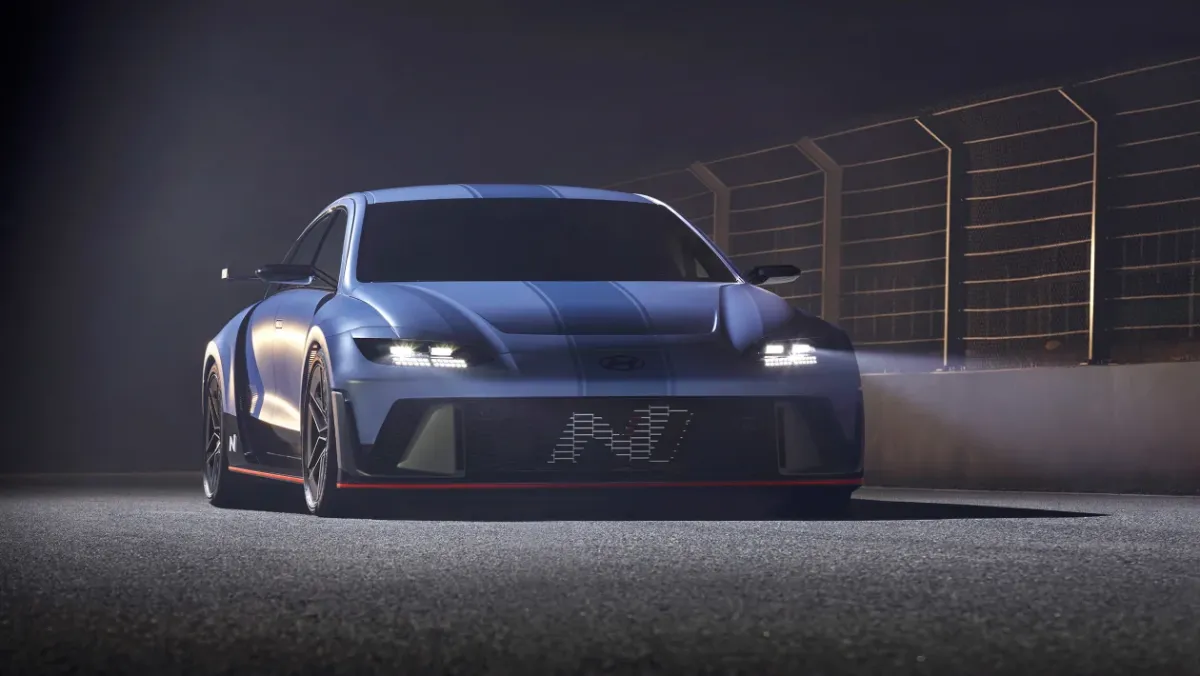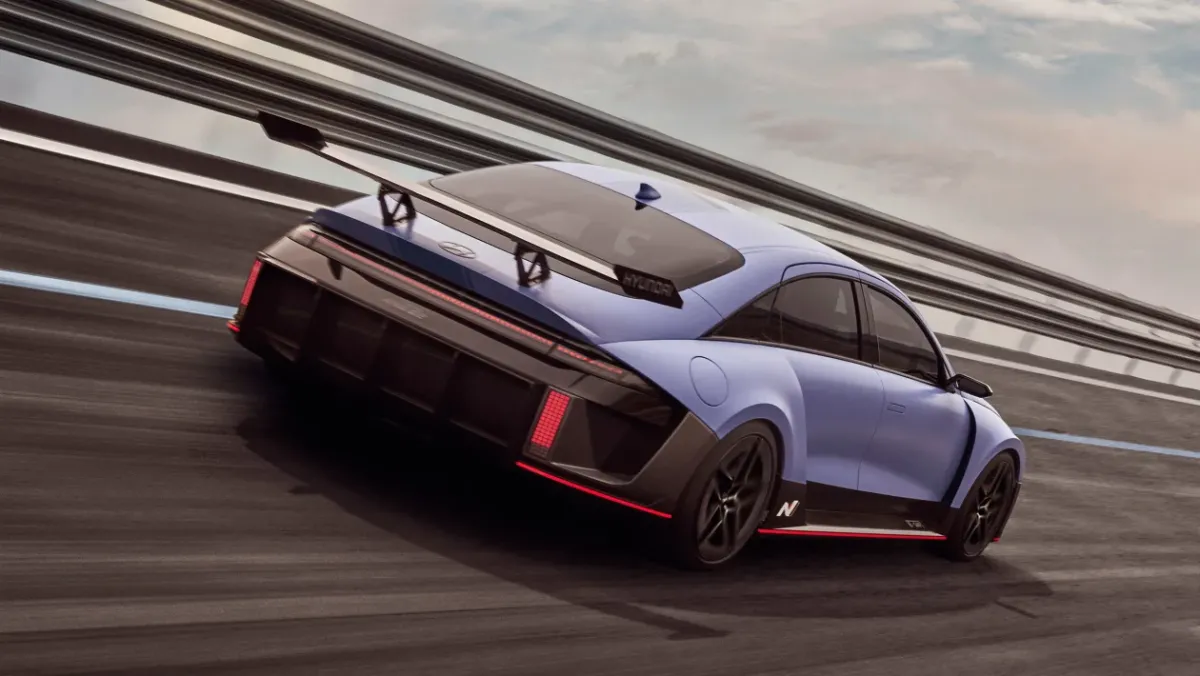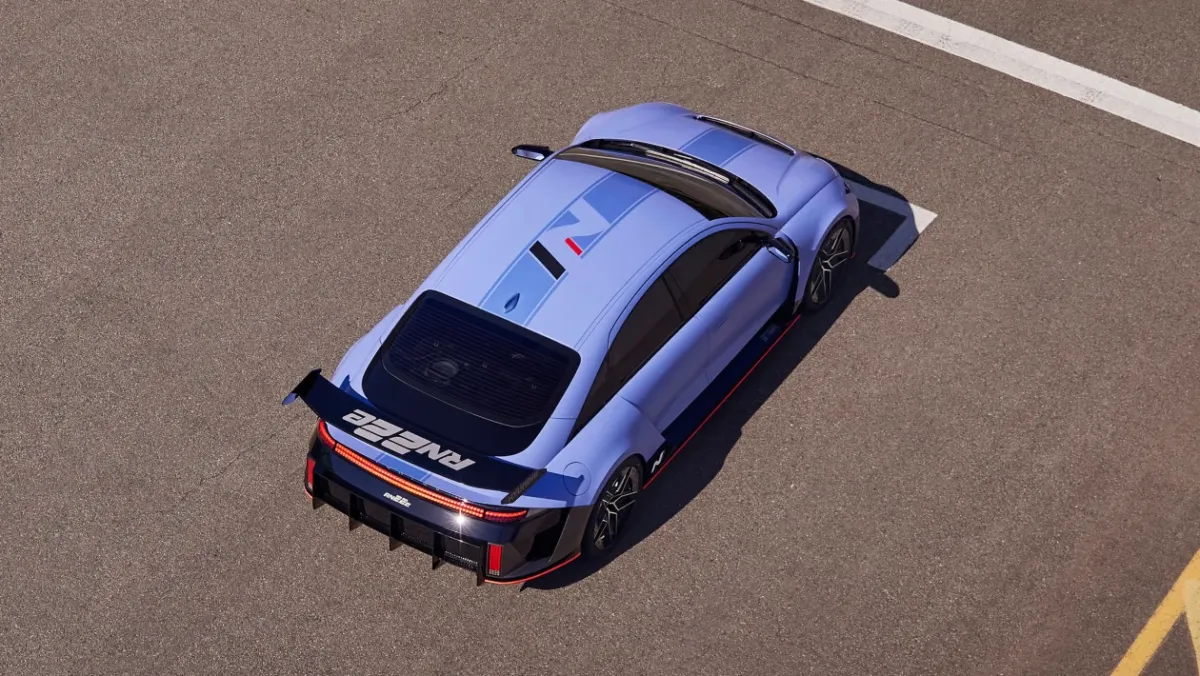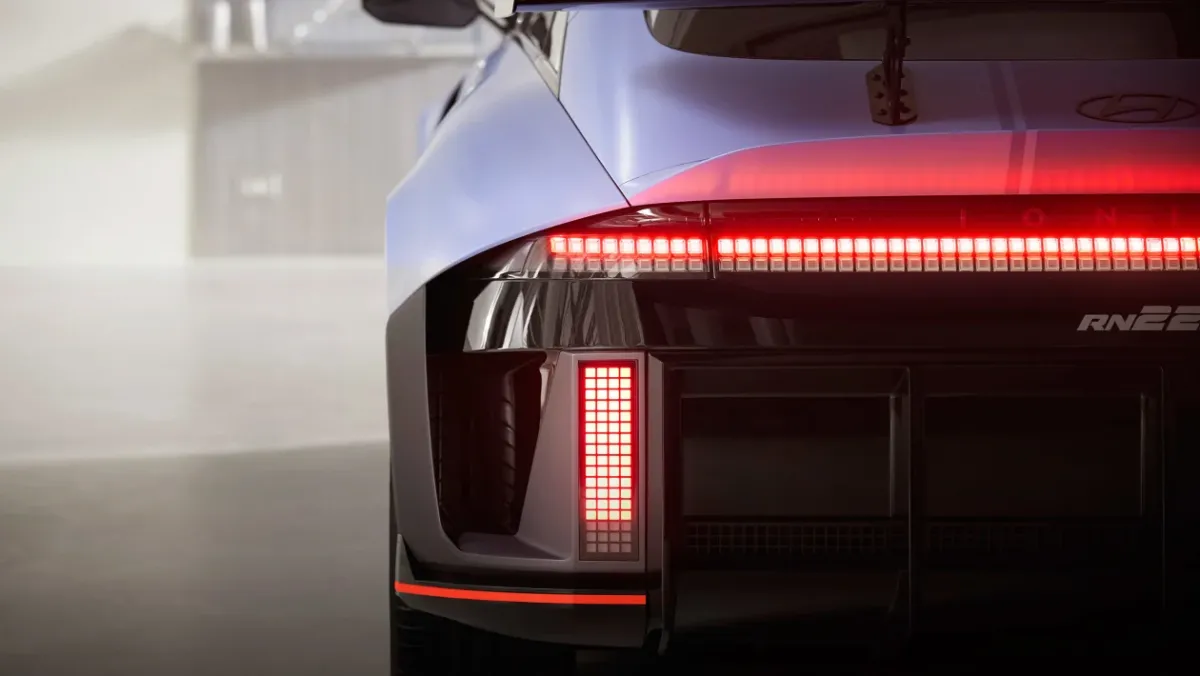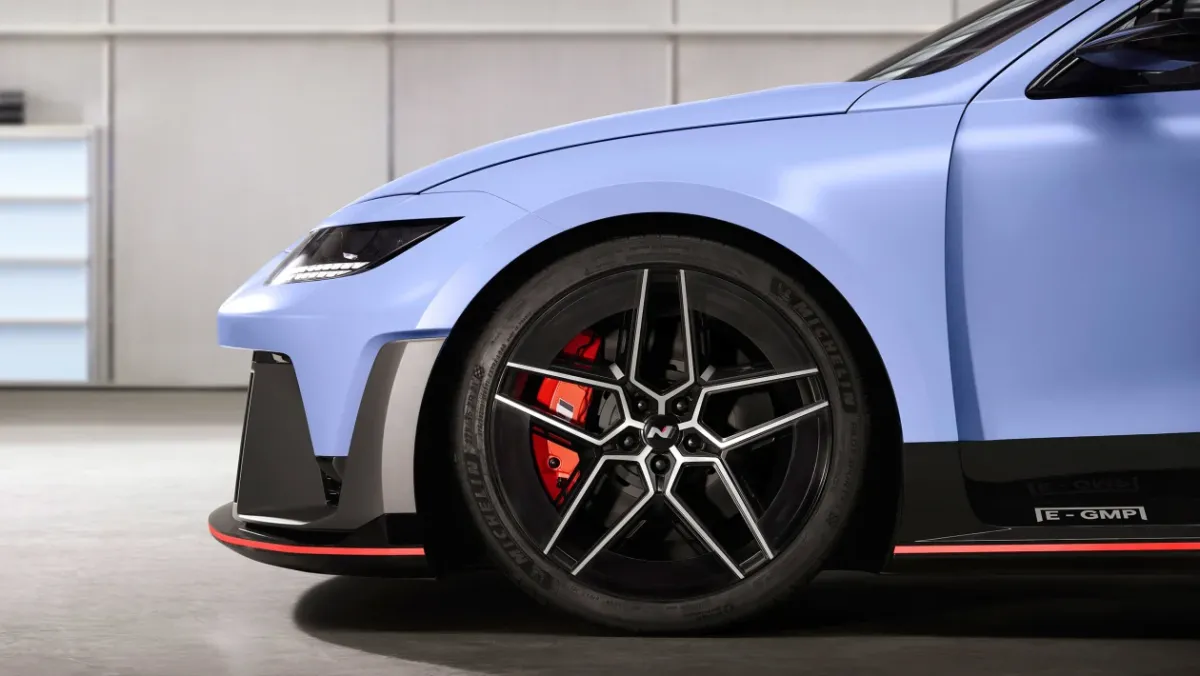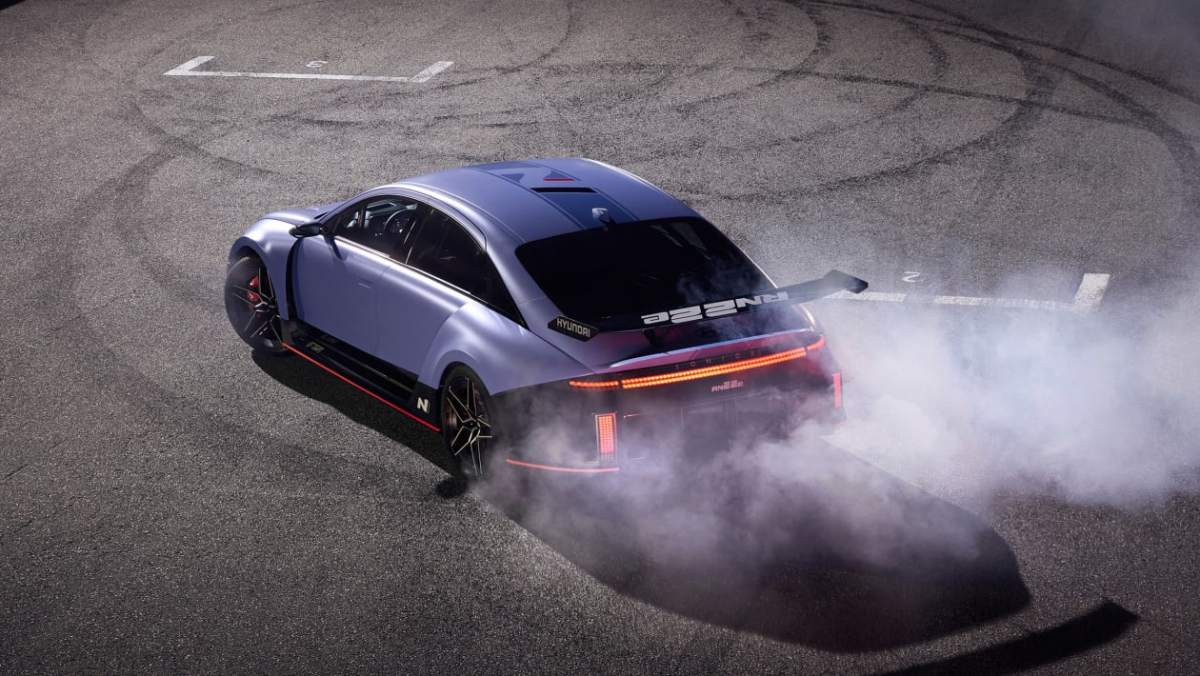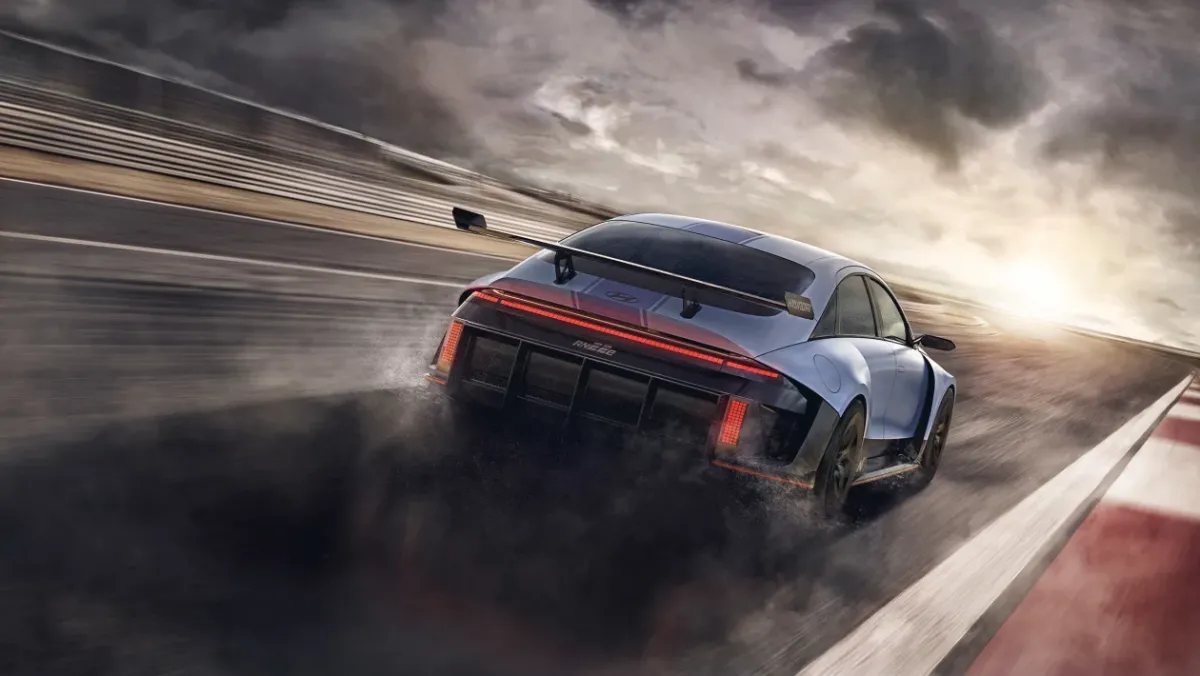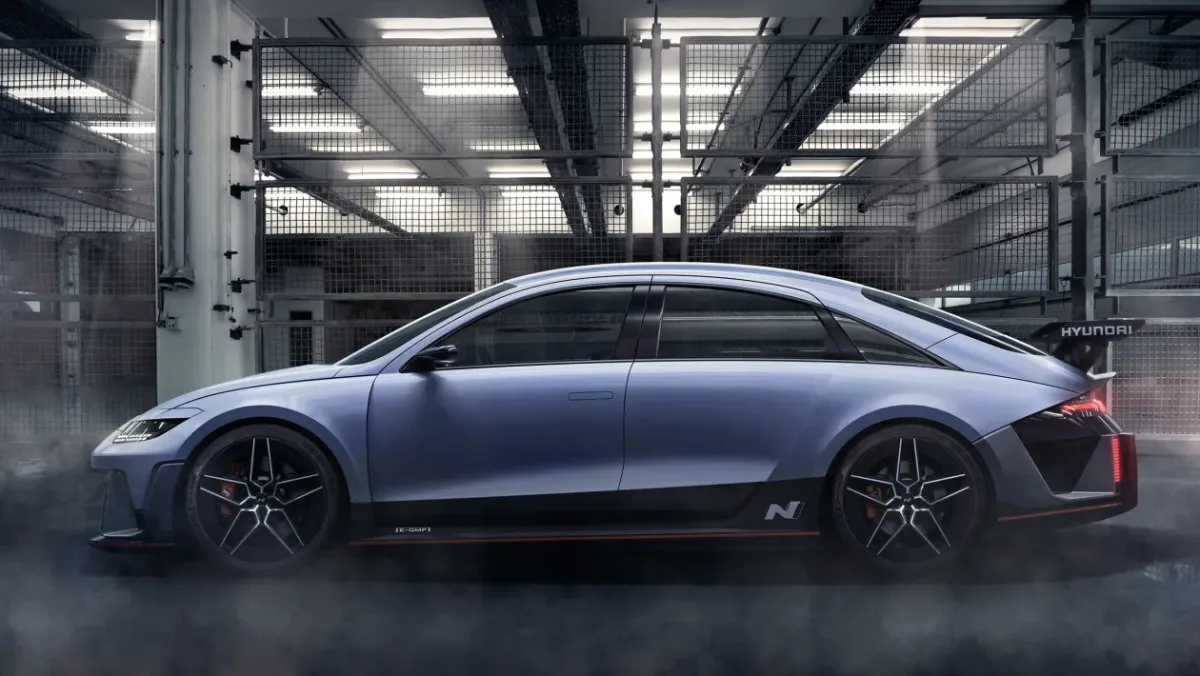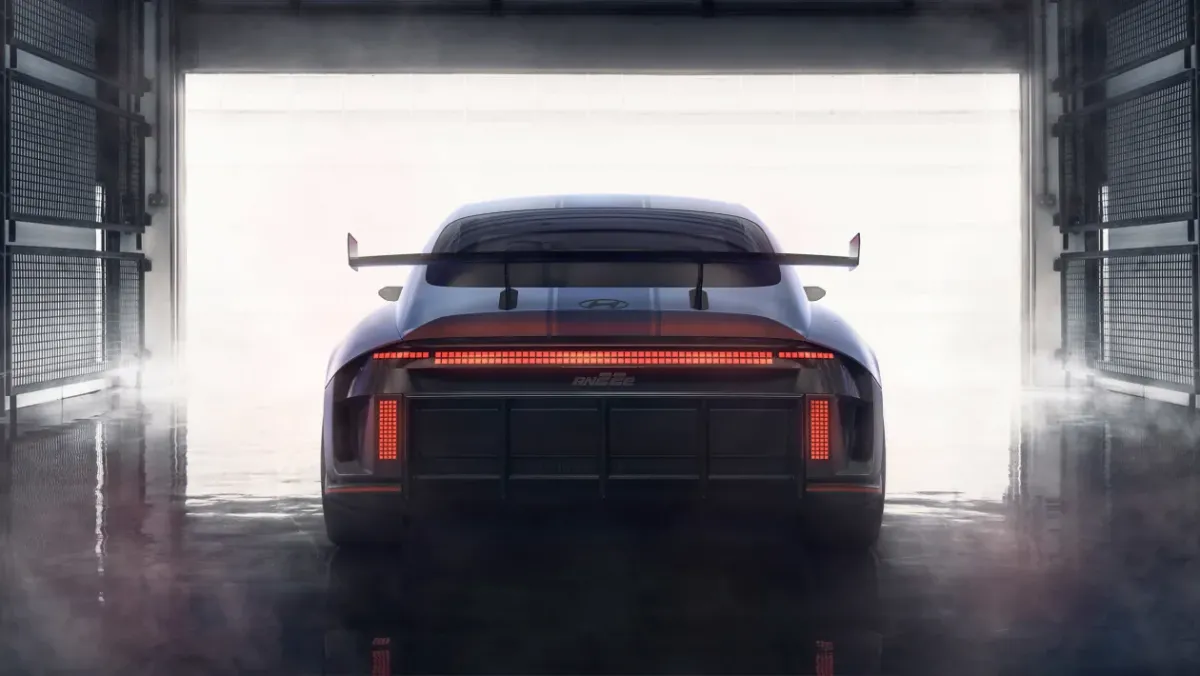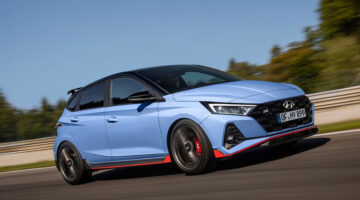High performance Ioniq 6 N could rival Tesla Model 3 Performance, if Hyundai decides to build it
Hyundai’s revealed a new concept called the RN22e, essentially previewing an N version of its Ioniq 6 saloon. This ‘rolling lab’ concept car is just one part of a much wider collection of insights previewed by the Korean giant, with confirmation that it’s also working on an N version of the Ioniq 5 SUV, and the release of a fantastic new N Vision 74 Concept.
This RN22e concept sits somewhere between Hyundai’s other two debuts, being a direct correlation to a potential new model, without blatantly being confirmed for production. Obviously based on the new Ioniq 6, its fundamental hardware gives us plenty of insight as to what’s hidden beneath the new and much wider body, starting with the powertrain.
Like the forthcoming Ioniq 5 N and Kia EV6 GT, which both share its E-GMP platform, the RN22e features a dual-motor setup that’s rated at a peak of 569bhp combined, with 546lb ft of torque. These motors draw power from a 77.4kWh battery pack that has both 400V and 800V electrical systems, the latter allowing for super fast charging that’ll recharge the battery from 10 to 80 per cent in under 18 minutes.
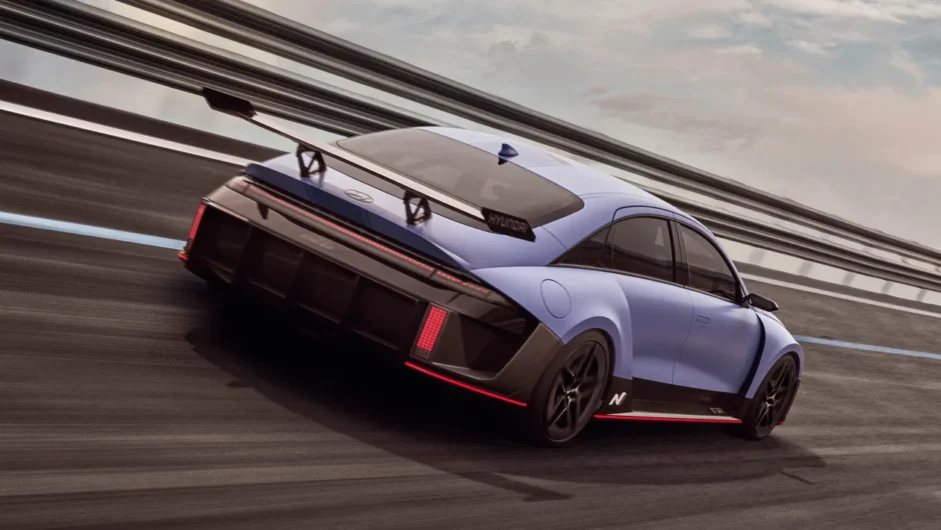
While these are impressive numbers, what’s new for the RN22e, and something that we suspect might make its way into production in future electric N models, is the utilisation of an electronically-controlled limited slip differential on the rear axle that will also have power torque-vectoring capabilities.
While some high performance EVs (like the Audi E-Tron S) are able to manage torque between the wheels due to the use of two motors that power an individual rear wheel, most EVs like the Hyundai use just one electric motor per axle, making this type of differential essential to create that torque vectoring capability.
Hyundai’s engineers have also been working on other ways to increase the RN22e’s dynamism through software, something that is still in its infancy in electric cars, but a thread of development that has the potential to make huge improvements in the car’s capability and driving behaviour. One such development pathway is through augmentation of the regenerative brakes that controls both yaw and slip, something that could be made variable through the various driver modes that Hyundai N is so well known for.
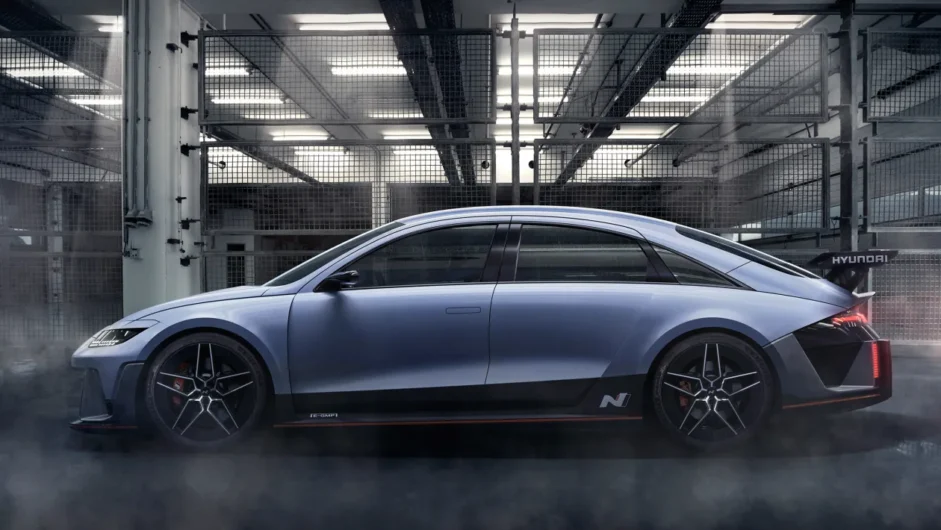
In addition to the new differential, Hyundai’s also upgraded other elements of the chassis to cope with on-track driving. This includes much larger 400mm front brakes with four-piston callipers, plus larger and wider wheels and tyres that have necessitated wider arches.
This is where Hyundai’s design team comes in, as the RN22e takes the Ioniq 6’s streamlined aesthetic in a whole new direction, previewing not just what a production version could look like, but also revealing design motifs that we could see on the forthcoming Ioniq 5 N. The design’s fundamental difference lies in its extra width as mentioned above, here sitting proud of the 6’s existing door skins giving it a touring car-like stance.
Both the front and rear bumpers are new, and feature far more aggressive openings that integrate into the design with a surprising amount of finesse. The front splitter, air dam, side skirts and rear diffuser insert all feature Hyundai’s trademark red pinstripe, while the new vented bonnet and rear wing complete the aesthetic picture – there’s even some 1990’s style ‘eyelids’ over the familiar production headlights.
It’s worth remembering that the RN22e is still a concept, and while Hyundai has not confirmed that it will be put into production, it’s not that much of a stretch to imagine an Ioniq 6 N with many of the same technical and design elements hitting the road in the next few years. All Hyundai needs to do now is build it.
This article originally appeared at evo.co.uk
Copyright © evo UK, Autovia Publishing

